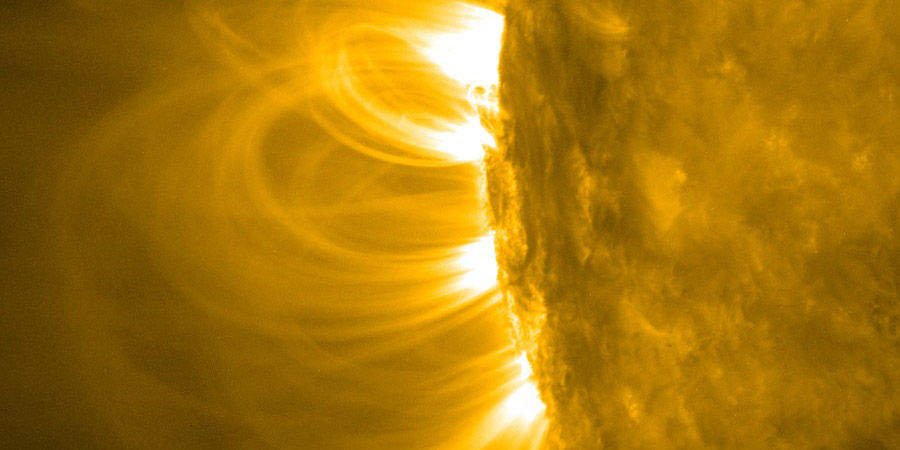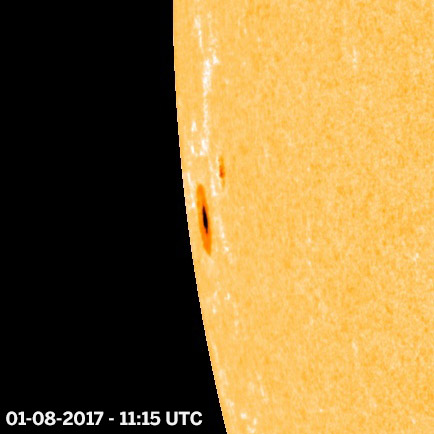AR2665 returns, Coronal hole faces Earth
Tuesday, 1 August 2017 11:51 UTC

Old sunspot region 2665 which caused a couple of large far side eruptions is now rotating back onto the earth-facing solar disk.
A couple of smaller sunspots are visible right now and solar activity has picked up with B and C-class activity. How will the region look like when it has fully rotated into view and is it still capable of producing major solar flares? We will soon find out!

⇧ Sunspot region 2665 returns. How many more spots are still hiding behind the limb? Image by NASA SDO.
Coronal hole faces Earth
A southern extension of the northern hemisphere polar coronal hole is facing Earth today. An enhanced solar wind stream from this coronal hole could arrive in about 3 days from now and cause enhanced geomagnetic conditions this next Friday, 4 August.
A coronal hole is facing Earth. Enhanced solar wind could arrive in ~3 days - Follow live on https://t.co/T1Jkf6i4Cb pic.twitter.com/Wjsj5s21Um
— SpaceWeatherLive (@_SpaceWeather_) August 1, 2017
Thank you for reading this article! Did you have any trouble with the technical terms used in this article? Our help section is the place to be where you can find in-depth articles, a FAQ and a list with common abbreviations. Still puzzled? Just post on our forum where we will help you the best we can!
Latest news
Latest forum messages
More topicsSupport SpaceWeatherLive.com!
A lot of people come to SpaceWeatherLive to follow the Sun's activity or if there is aurora to be seen, but with more traffic comes higher server costs. Consider a donation if you enjoy SpaceWeatherLive so we can keep the website online!

Space weather facts
| Last X-flare | 2024/12/08 | X2.2 |
| Last M-flare | 2024/12/26 | M7.3 |
| Last geomagnetic storm | 2024/12/17 | Kp5+ (G1) |
| Spotless days | |
|---|---|
| Last spotless day | 2022/06/08 |
| Monthly mean Sunspot Number | |
|---|---|
| November 2024 | 152.5 -13.9 |
| December 2024 | 119.3 -33.2 |
| Last 30 days | 122 -35.7 |


